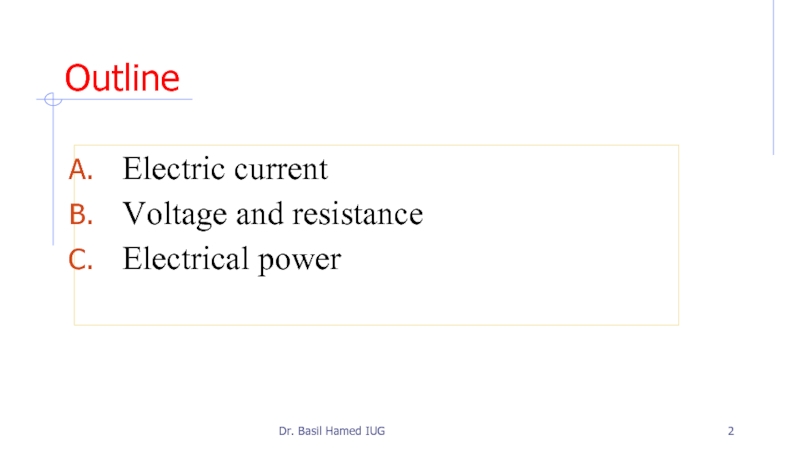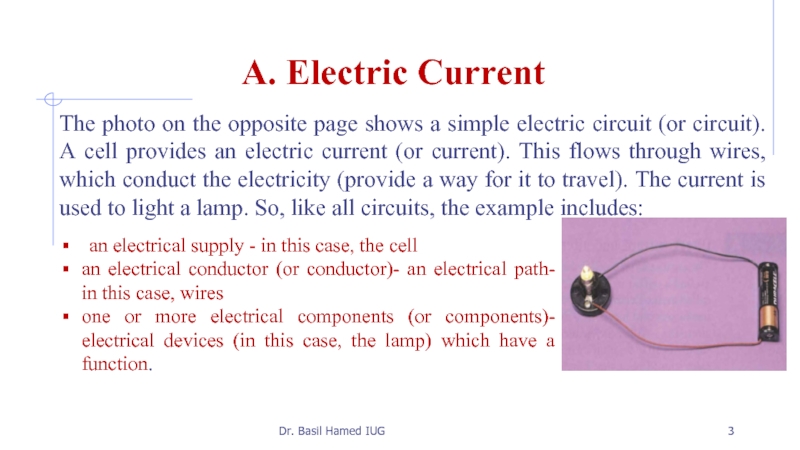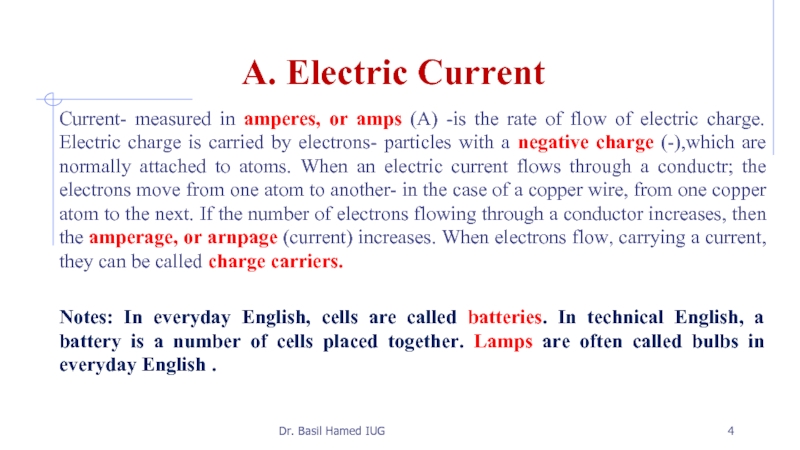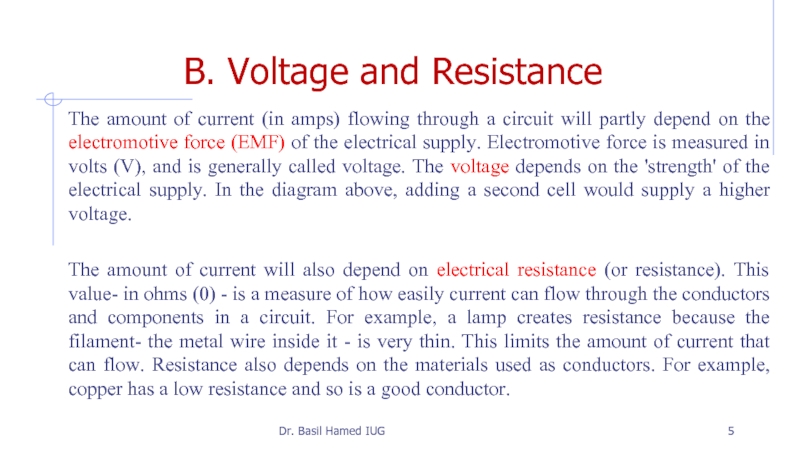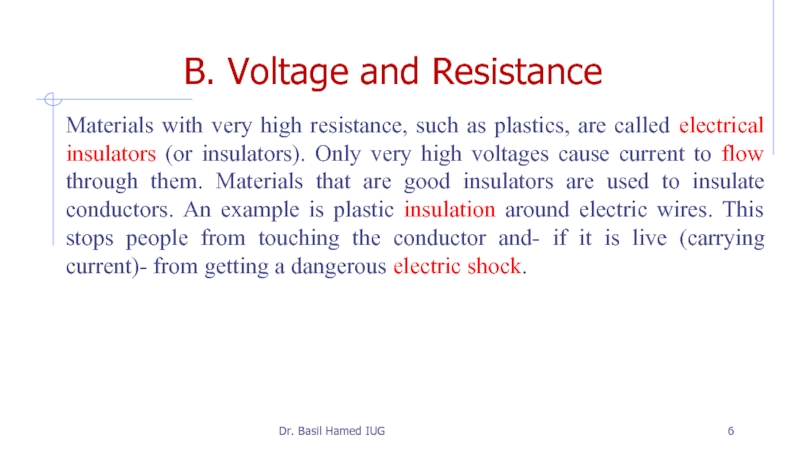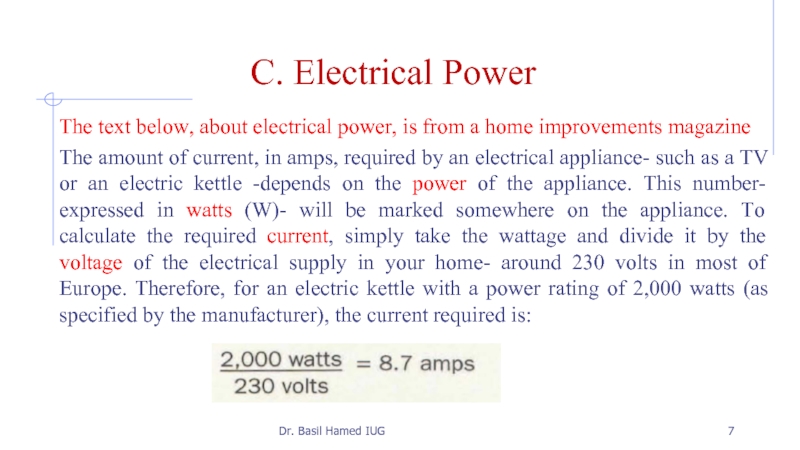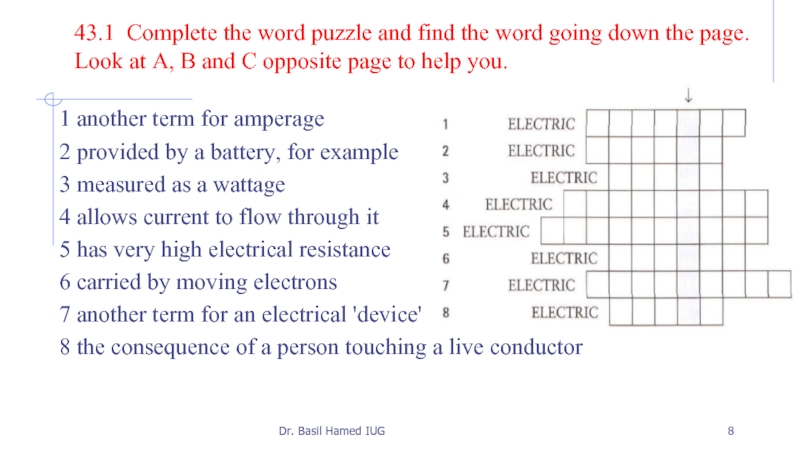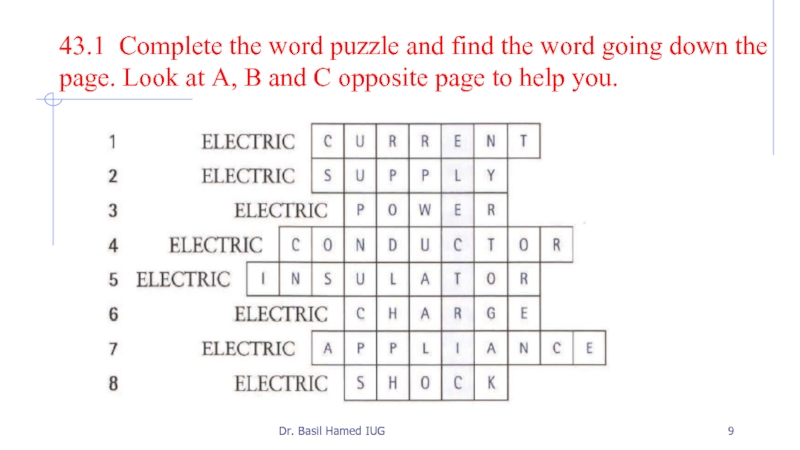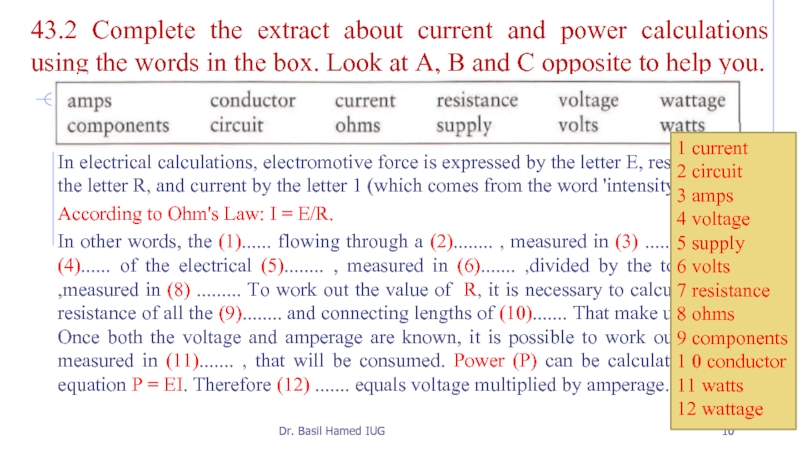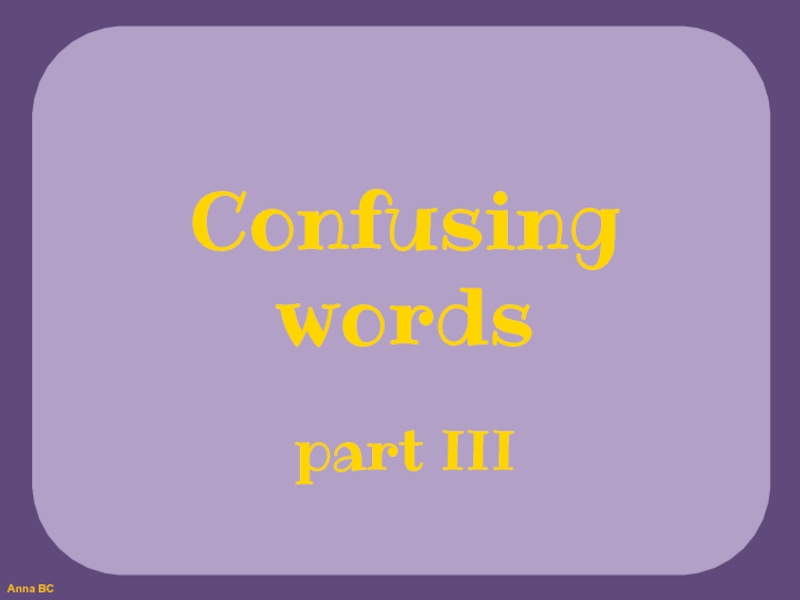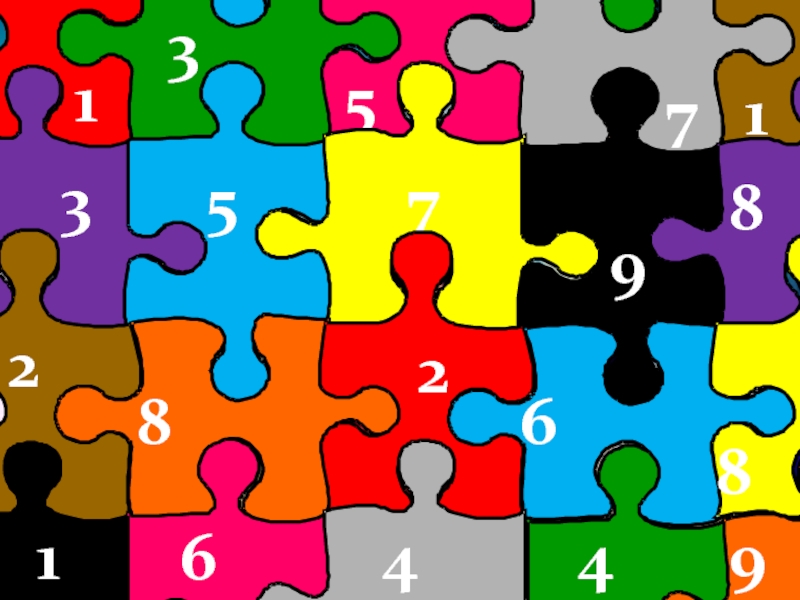Dr. Basil Hamed IUG
- Главная
- Разное
- Дизайн
- Бизнес и предпринимательство
- Аналитика
- Образование
- Развлечения
- Красота и здоровье
- Финансы
- Государство
- Путешествия
- Спорт
- Недвижимость
- Армия
- Графика
- Культурология
- Еда и кулинария
- Лингвистика
- Английский язык
- Астрономия
- Алгебра
- Биология
- География
- Детские презентации
- Информатика
- История
- Литература
- Маркетинг
- Математика
- Медицина
- Менеджмент
- Музыка
- МХК
- Немецкий язык
- ОБЖ
- Обществознание
- Окружающий мир
- Педагогика
- Русский язык
- Технология
- Физика
- Философия
- Химия
- Шаблоны, картинки для презентаций
- Экология
- Экономика
- Юриспруденция
Current, Voltage and Resistance презентация
Содержание
- 1. Current, Voltage and Resistance
- 2. Outline Electric current Voltage and resistance Electrical power Dr. Basil Hamed IUG
- 3. A. Electric Current The photo on the
- 4. A. Electric Current Current- measured in amperes,
- 5. B. Voltage and Resistance The amount of
- 6. B. Voltage and Resistance Materials with very
- 7. C. Electrical Power The text below, about
- 8. 43.1 Complete the word puzzle and find
- 9. 43.1 Complete the word puzzle and find
- 10. 43.2 Complete the extract about current and
Слайд 1Unit 43: Current, Voltage and Resistance Dr. Basil Hamed Technical English Islamic University of
Слайд 3A. Electric Current
The photo on the opposite page shows a simple
Dr. Basil Hamed IUG
an electrical supply - in this case, the cell
an electrical conductor (or conductor)- an electrical path- in this case, wires
one or more electrical components (or components)- electrical devices (in this case, the lamp) which have a function.
Слайд 4A. Electric Current
Current- measured in amperes, or amps (A) -is the
Notes: In everyday English, cells are called batteries. In technical English, a battery is a number of cells placed together. Lamps are often called bulbs in everyday English .
Dr. Basil Hamed IUG
Слайд 5B. Voltage and Resistance
The amount of current (in amps) flowing through
The amount of current will also depend on electrical resistance (or resistance). This value- in ohms (0) - is a measure of how easily current can flow through the conductors and components in a circuit. For example, a lamp creates resistance because the filament- the metal wire inside it - is very thin. This limits the amount of current that can flow. Resistance also depends on the materials used as conductors. For example, copper has a low resistance and so is a good conductor.
Dr. Basil Hamed IUG
Слайд 6B. Voltage and Resistance
Materials with very high resistance, such as plastics,
Dr. Basil Hamed IUG
Слайд 7C. Electrical Power
The text below, about electrical power, is from a
The amount of current, in amps, required by an electrical appliance- such as a TV or an electric kettle -depends on the power of the appliance. This number- expressed in watts (W)- will be marked somewhere on the appliance. To calculate the required current, simply take the wattage and divide it by the voltage of the electrical supply in your home- around 230 volts in most of Europe. Therefore, for an electric kettle with a power rating of 2,000 watts (as specified by the manufacturer), the current required is:
Dr. Basil Hamed IUG
Слайд 843.1 Complete the word puzzle and find the word going down
1 another term for amperage
2 provided by a battery, for example
3 measured as a wattage
4 allows current to flow through it
5 has very high electrical resistance
6 carried by moving electrons
7 another term for an electrical 'device'
8 the consequence of a person touching a live conductor
Dr. Basil Hamed IUG
Слайд 943.1 Complete the word puzzle and find the word going down
Dr. Basil Hamed IUG
Слайд 1043.2 Complete the extract about current and power calculations using the
In electrical calculations, electromotive force is expressed by the letter E, resistance by the letter R, and current by the letter 1 (which comes from the word 'intensity').
According to Ohm's Law: I = E/R.
In other words, the (1)...... flowing through a (2)........ , measured in (3) ...... , equals the (4)...... of the electrical (5)........ , measured in (6)....... ,divided by the total (7) ....... ,measured in (8) ......... To work out the value of R, it is necessary to calculate the total resistance of all the (9)........ and connecting lengths of (10)....... That make up the circuit. Once both the voltage and amperage are known, it is possible to work out the power, measured in (11)....... , that will be consumed. Power (P) can be calculated using the equation P = EI. Therefore (12) ....... equals voltage multiplied by amperage.
Dr. Basil Hamed IUG
1 current
2 circuit
3 amps
4 voltage
5 supply
6 volts
7 resistance
8 ohms
9 components
1 0 conductor
11 watts
12 wattage

